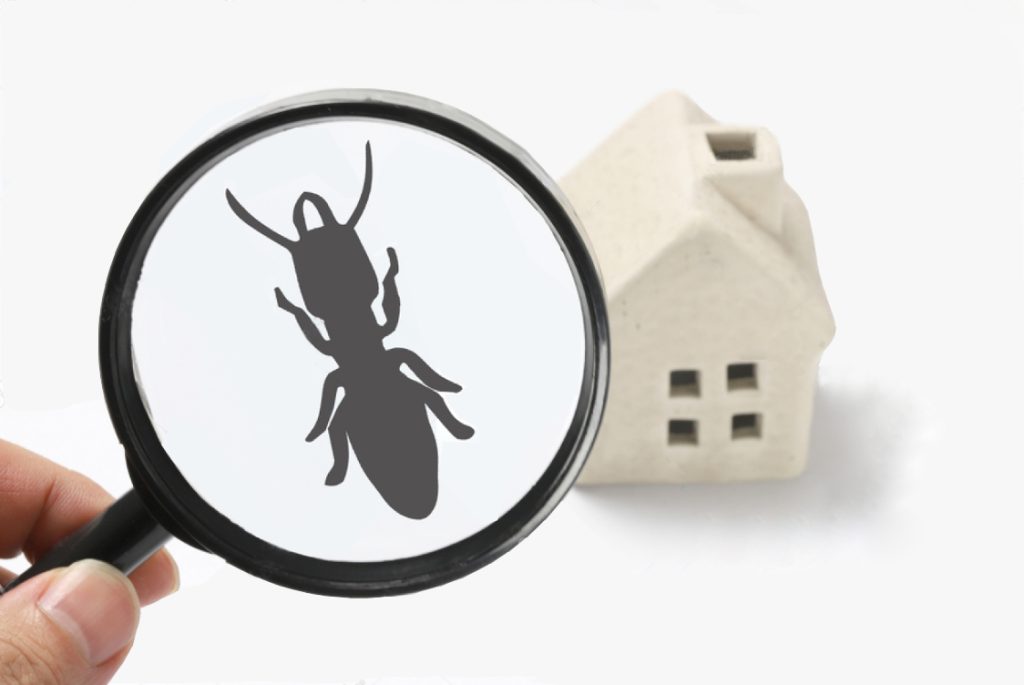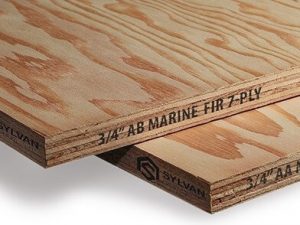Building longevity is the biggest energy saving and emission reduction, and termite control is of great significance to improving the living environment, increasing material utilization, preventing building disasters, and promoting the implementation of dual-carbon work. Termite prevention and control is a highly specialized systematic project. A complete eradication requires the full cooperation and joint efforts of all construction participants. Based on this, this article analyzes in detail the reasons why home termite control is difficult to eradicate and the countermeasures.
Termites are one of the oldest social insects on earth. They are highly reproductive, moisture-loving, polymorphous, swarming insects that can damage furniture, corrode main structural steel bars and wire insulation, and destroy circuits, houses, bridges, embankments, floors, and forest trees. Because of their powerful destructive power, they are called “toothless tigers”.

Ⅰ.Biological and harmful characteristics of termites
1.Biological characteristics. Termites have soft bodies, come in various colors, have front and lower mouths, and chewing mouthparts. The nest is strong and practical, and can support millions of termites to live together. They are social creatures with clear hierarchy and division of labor, close connections, mutual constraints and interdependence. There are mainly two types: reproductive and non-reproductive.
2.Hazard characteristics. Living in groups is the main habit of termites, and they are highly concealed and their harm is difficult to detect. Because they are sensitive to sunlight, termites move in places that are difficult to see. If effective prevention is not carried out, a large-scale outbreak will cause huge damage. There are various ways of transmission. Self-propagation or artificial carrying will expand the area of harm. Among them, self-reproduction can find a more suitable living environment, and hundreds of thousands of termites can be reproduced in just a few years. Wood or fibrous organisms are the main food of termites, which cause serious harm to forest trees. However, the harm of termites is not limited to certain substances. Houses and green plants are all important places where termites harm.
Ⅱ.The living environment and conditions of household termites
Termites with their unique way of survival and reproduction ability, have caused serious harm to homes. They feed on organic matter such as wood, cloth, and paper, causing serious damage to the wooden structure, furniture, floors or ceilings etc. of the house. At the same time, termites have extremely strong reproductive capabilities. Once a nest forms in the home environment, it spreads at an alarming rate, causing great trouble to the family.
The living environment of termites is mainly related to temperature, humidity, air, light, and soil. All their metabolic activities, such as the interaction between various organs in the insect’s body, the transfer of hormones, the transfer of nutrients, and the excretion of metabolites etc, are all in achieved in water-based solution. Generally speaking, termite species with well-established colonies require specialized water supplies to maintain the colony’s moisture and humidity needs. The moisture content of termite bodies is about 9%, and the moisture content of termite nests accounts for 30 to 37%, with an average of 33%. When the moisture content of the environmental matrix is lower than 30%, the normal life of the colony will be affected. Therefore, household termites need to build their nests in a dark, relatively closed and humid space, otherwise the termites cannot survive.
In addition, household termites need a special water supply to maintain the water and humidity needs of the colony. They have a special water absorption line leading to the source (water-absorbing ant road). The water absorption line can ensure the water needs of themselves and their nests. If the water absorption line is lost or Unable to obtain water directly from the water source through the mouthparts, the entire termite colony will cease life activities due to severe water shortage.
Ⅲ.Reasons why home termite control is difficult to cure
1.Be superstitious about drug prevention and treatment. For termite prevention and control, professional requirements are high. However, the first thing that people think of is to deal with it with insecticides. On the one hand, if termites are not treated in time or are handled improperly, the damage caused by termites will be expanded, resulting in long-term treatment. On the other hand, if the next step of protective measures is not taken after extermination, due to appropriate temperature or humidity and abundant food etc, a termite colony counterattack will occur in the same area. It is undeniable that modern insecticide drugs and techniques can indeed kill termites for a period of time, but it is difficult to do so for a long time. The reason is that insecticides always have a validity period. Just like mosquitoes breeding in stagnant water, they only kill the mosquitoes without clearing the stagnant water. After a period of time, the stagnant water will breed mosquitoes again. This is a typical strategy that treats the symptoms but not the root cause.
In the current technical regulations, property management and other regulations, it is worth considering using drugs to prevent and control termites as a standard measure. ① In disguise, it is recognized that drugs are the best solution for preventing and controlling household termites. This actually defines that household termite pests have nothing to do with building and decoration design and construction quality, which is not conducive to household termite control and technological progress; ② It should be noted that if “drugs are given priority” “If it becomes a business rule, it may really become a way for some people to make money. If this traditional concept and technological innovation route are not changed, the termite problem will be difficult to eradicate.
2.Common defects in building quality encourage termite breeding. At present, whether it is a new project or an existing building, there are common building disease problems such as leakage and cracks. This not only affects the building’s use function, but also aggravates the premature aging and deterioration of the building. Such diseases also create a problem for household termites, good living conditions. For example, the pores and wooden wedges between the bottom of the exterior wall edge beams and the filling wall where exterior walls and windows leak, and between the exterior wall window frames and their wall openings are unique spatial environments for termites to nest and breed. However, at present, it is common practice to deal with leakage in exterior walls and windows with waterproof coatings and sealants. This approach of treating the symptoms rather than the root cause can easily lead to the accumulation and spread of water in the building. The effect is not only unsatisfactory, but also affects the appearance of the facade. This aggravates the deterioration of components and virtually encourages termite breeding.
In addition, in modern architecture and home decoration, it is common to see that the sewer pipes in bathrooms, kitchens and balconies are covered with masonry, and are matched with the drainage pipes of the bathroom floor sink tank to connect the outdoor sewers with the filling layer of the bathroom floor sink tank; the kitchen as a whole Floor-standing kitchen cabinets etc, as well as the adhesive layer of decorative bricks in bathrooms and kitchen walls often have defects such as hollows, creating a relatively airtight, light-tight, airtight, moisture-prone space and environment, which is artificially created. It is an ideal fertile ground for the breeding and reproduction of household termites, and is also the deep-seated root cause that makes it difficult to eradicate household termites.
Ⅳ. Home termite prevention and control strategies
Home termite prevention and control is a typical systematic project. It requires support from the design, construction, operation and maintenance of building decoration, and integrates the basic principles of natural harmony into building decoration design and construction to avoid water accumulation inside the building. And artificially obstructing the living environment and conditions of household termites is an effective way to prevent and control the occurrence of household termites.
1.Countermeasures in building structure design. ①The bathroom floor uses a small falling plate structure instead of a caisson structure. ② Set the floor drain pipes in bathrooms and kitchens to vertical drainage, and combine floor drainage and floor bottom drainage into one. ③The vertical drainage pipes connecting bathrooms, kitchens, and balconies on each floor should be set outdoors as much as possible. ④ The pipe wells installed in the floor room should be equipped with ventilation windows to facilitate air convection.
2.Countermeasures in building construction and operation and maintenance. ① Pay attention to and ensure that the quality of the main concrete structure meets the established requirements, especially the quality of concrete construction in areas exposed to water. ② Wooden formwork used for pouring concrete structures is strictly prohibited from being left inside the building. ③When there are honeycomb and slag inclusion defects in the main concrete structure, replacement technology should be used to treat both the symptoms and the root cause. ④ The wooden wedges used to temporarily fix aluminum alloy doors, windows, and wall panel components must be taken out in time and cannot be left in the wall. ⑤ If there is a leakage problem in a building, when choosing a solution, you should not simply look for the cause from the failure of the waterproof layer, etc., but fully consider whether there are defects in the concrete structure, etc. Special treatment is required to address both the symptoms and root causes to achieve long-term stability. It should be noted that the current practice of conventional waterproofing and leak repair measures such as grouting or surface sealing to deal with leakage is not only difficult to last, but will also aggravate the deterioration of the building structure and make it easier for termites to breed.
3.Countermeasures for indoor and outdoor decoration. ① Indoor and outdoor shapes constructed of stone and profile components should be equipped with windows to facilitate air convection. ②Shutters should be installed between the bottom and the back of the ceiling in water-contact areas to facilitate air convection. ③ Set it up between the base cabinets and walls in water-contact areas such as bathrooms and kitchens, and leave a gap to facilitate air convection.
4.Improve the concept of prevention and comprehensive management. Attention should be paid to termite prevention and control, and termite prevention and control projects should be added to the construction process of construction projects. When selecting wood for building decoration, materials with anti-termite functions should be selected, and effective treatment can also be carried out on the surface of the selected materials with anti-Termite treatment. And we need to establish a more environmentally friendly, diversified, and sustainable concept of termite control, and coordinate the use of various technical means that can play a role in termite control in construction projects. For example, we should conduct inspections on structures that can cause termite damage in architectural design Improve and strengthen the preventive treatment of termites in wood, develop more wooden structures that can resist termite damage, adopt a series of chemical treatments and biological control technologies, etc. It is necessary to maximize the rational use of natural controllable factors to reduce termite damage to economic damage. Below the level, establish and implement the termite control concept of “prevention first, combining prevention and control, and comprehensive management” to improve the quality and level of termite control work and effectively reduce the harm and losses caused by termites.

